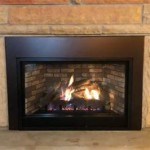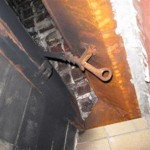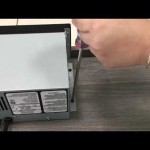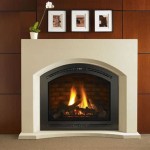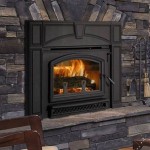Selecting and Applying High-Temperature Paint for Fireplace Doors
Fireplace doors not only enhance the aesthetic appeal of a hearth but also contribute to safety and energy efficiency. Over time, the paint on these doors can degrade due to the intense heat generated by the fire. Replacing the doors entirely can be costly; therefore, repainting them with suitable high-temperature paint presents a more economical and practical solution. Choosing the correct paint and applying it properly is crucial for ensuring the longevity and performance of the refinished fireplace doors.
The primary function of fireplace door paint is to withstand extremely high temperatures without blistering, cracking, or emitting harmful fumes. Standard paints are not designed for this level of heat and will quickly fail when exposed to the conditions within and around a fireplace. High-temperature paints, conversely, are formulated with specialized resins, pigments, and additives that allow them to maintain their integrity and appearance even when subjected to temperatures exceeding 1000°F (538°C) in some instances. These paints are available in various finishes, including matte, satin, and metallic, allowing homeowners to achieve the desired look for their fireplace.
Understanding the different types of high-temperature paints is essential for making an informed decision. The most common types include aerosol spray paints, liquid paints applied with a brush, and powder coatings. Aerosol spray paints are generally favored for their ease of application and quick drying time. Liquid paints offer greater control over the application process, especially for intricate designs or larger surfaces. Powder coatings, while offering superior durability and resistance, require specialized equipment for application, typically making them a less accessible option for DIY projects.
Determining the Appropriate Type of High-Temperature Paint
Selecting the right high-temperature paint requires consideration of several factors. The material of the fireplace doors is a primary concern. Most fireplace doors are made of cast iron or steel, both of which are compatible with most high-temperature paints. However, always consult the paint manufacturer's guidelines to ensure compatibility. The expected temperature exposure is also vital. Different paints are rated for different temperature ranges, and it is critical to select a paint rated for temperatures exceeding the maximum heat output of the fireplace. Furthermore, consider the desired finish. Matte finishes tend to be more resistant to showing imperfections, while glossier finishes offer a more modern and reflective appearance. The level of durability needed is also a consideration. If the fireplace doors are frequently handled or exposed to abrasive materials, a more durable paint formulation, such as a ceramic-based paint, may be preferable.
Before commencing the painting process, thorough preparation is paramount. This includes removing the fireplace doors from the fireplace opening and placing them on a protected workspace. Clean the doors thoroughly to remove any dust, soot, grease, or loose paint. A wire brush or scraper can be used to remove stubborn debris. For greasy surfaces, a degreasing cleaner is recommended. Once clean, the doors should be lightly sanded to create a textured surface that will promote adhesion of the new paint. Finally, wipe down the doors with a tack cloth to remove any residual dust particles.
Proper Application Techniques for Long-Lasting Results
The application technique directly impacts the final appearance and longevity of the paint job. For aerosol paints, apply thin, even coats, holding the can approximately 10-12 inches from the surface. Avoid applying thick coats, as this can lead to runs and drips. Allow each coat to dry completely before applying the next. Multiple thin coats are always preferable to a single thick coat. For liquid paints, use a high-quality brush designed for use with high-temperature coatings. Apply the paint in smooth, even strokes, avoiding brush marks. As with aerosol paints, multiple thin coats are recommended. Allow the paint to cure completely according to the manufacturer's instructions before reattaching the doors to the fireplace. The curing process typically involves gradually increasing the temperature of the fireplace over several hours to allow the paint to fully harden and bond to the metal surface.
Safety precautions are essential when working with high-temperature paints. Always work in a well-ventilated area to avoid inhaling fumes. Wear appropriate personal protective equipment, including gloves and a respirator mask. Avoid contact with skin and eyes. If contact occurs, rinse thoroughly with water and seek medical attention if necessary. Ensure proper disposal of used paint containers and rags, following local regulations.
Maintaining the refinished fireplace doors is crucial for preserving their appearance and extending their lifespan. Regularly cleaning the doors with a soft cloth will remove dust and soot. Avoid using harsh chemicals or abrasive cleaners, as these can damage the paint finish. If the doors are exposed to extreme heat or frequent use, it may be necessary to touch up the paint periodically to address any minor imperfections or scratches. Proper maintenance will ensure that the refinished fireplace doors continue to enhance the aesthetic appeal and functionality of the fireplace for years to come.
Troubleshooting Common Problems and Ensuring Paint Longevity
Despite careful preparation and application, certain problems may arise during or after the painting process. One common issue is paint blistering or peeling, which is often caused by inadequate surface preparation or applying paint too thickly. To remedy this, remove the affected paint, thoroughly clean and sand the surface, and reapply the paint in thin, even coats. Another problem is uneven color or texture. This can be caused by inconsistent application techniques or using different batches of paint. Ensure that the paint is thoroughly mixed before application and use consistent application techniques to achieve a uniform finish. Finally, premature paint failure can occur due to excessive heat exposure or using a paint that is not rated for the expected temperatures. If this occurs, select a higher-temperature paint and reapply it following the recommended preparation and application procedures.
Proper curing is essential for ensuring the longevity of the paint finish. Follow the paint manufacturer's instructions carefully to ensure that the paint is fully cured before exposing the doors to high heat. Premature exposure to high heat can cause the paint to blister, crack, or peel. Regular inspection and maintenance will detect any potential problems early and allow for timely repairs, preventing more significant damage and extending the lifespan of the refinished fireplace doors.

Fireplace Door Update With Spray Paint Roots Wings Furniture Llc

Fireplace Door Update With Spray Paint Roots Wings Furniture Llc

How To Spray Paint A Brass Fireplace Insert Erfly House

How To Update Your Fireplace 5 Easy Affordable Ideas Doors Brick Makeover Cover

How To Spray Paint A Brass Fireplace Insert Erfly House

Some Like It Hot Centsational Style Fireplace Doors Home Improvement

How To Spray Paint A Brass Fireplace Insert Erfly House

Brass Painting S Instructions A Fireplace Black

Easy Diy Fireplace Makeover That Millennial Momma

Brass Fireplace Makeover Brick Remodel Home
Related Posts



